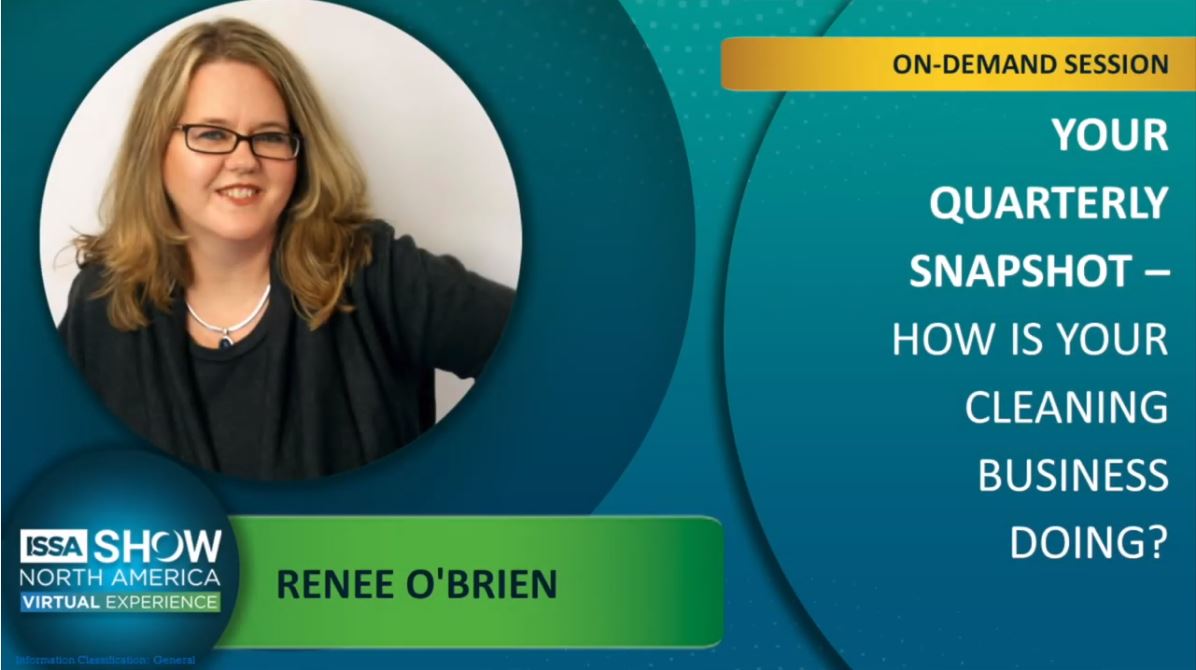Client feedback is essential – required even – for a company committed to delivering excellent service, so fire the ones who won’t help you do that for them.
Residential house cleaning is a service business. As such, the price for buy-in is good service, preferably excellent service. With good service being a subjective term, the price for buy-in becomes a bit steeper. One client may think that good service means showing up at the exact same time each visit while another may judge the quality based on who shows up to clean. Still others may determine that doing floors on hands and knees constitutes excellent service.
[EasyDNNnewsToken:Left Justify Embed 300 x 250]Your Reality versus Your Client’s Perception
While there are many things you can do to increase the value of your service to the client, nothing is as important as the client’s perception of the work that is being done. It is easy to feel you are doing all you can by sending your best teams, at the right time, providing high quality chemicals and equipment, and following best practices for the industry. If your client believes a stray hair, or a bumped baseboard, or possibly a broken glass are the true indicators of poor service while you are focusing only on what you think excellent service is, then you could easily find yourself in an unhappy place where you believe you are doing the very best you can, but all the customer can see is what is wrong. It quickly becomes clear that just focusing on what is right will never get us the entire picture we need to provide the quality service today’s customers demand.
Perception is the key here. Regardless of what you think, if the client thinks something different, then their perception trumps your reality. That means that the focus of your service needs to be on the client’s perception. R. L. Oliver’s Expectation Confirmation Theory holds that customer satisfaction can be defined by measuring the gap between the customer’s expectations and his or her perception of whether those expectations had been met. Measuring the client’s perspective of our ability to meet expectation then needs to be the all-important driver for any service-based company.
Measuring Client Satisfaction as Net Promoter Score
One fairly new direction that is being taken with regards to customer feedback and customer satisfaction is the Net Promoter Score (NPS) made popular by business loyalty guru Fred Reichheld. In his book The Ultimate Question 2.0 (Revised and Expanded Edition): How Net Promoter Companies Thrive in a Customer-Driven World, the question “Would you recommend us to a friend?” is used to determine not only a company’s promoters, but also those who are its detractors, those people who are actively looking to cause a company problems. The recommended simple formula used to get your NPS elicits a powerful metric used by some of the most influential companies in America to gauge their customer satisfaction. Costco, Apple, Nordstrom and Southwest Airlines, all known for their commitment to customer service and loyalty, ranked in the Top 10 US Net Promoter Scores for 2013. This seemingly simplistic question can tell you much more about loyalty than “rate the quality of our kitchen cleaning” ever could.
It would be difficult to deny the success of NPS for gauging customer loyalty, but it is becoming increasingly apparent that there is more to do to ensure that corrective action is taken on behalf of those who are not rating at the top of the NPS scale. In the Harvard Business Review Blog “What’s Your Complaint of the Month?,” Michael Schrage entreats us to use complaints “as a basis for rich dialogue” in our companies to guarantee not only that our companies become more sensitive to customers and clients but that we anticipate — as well as solve — the problems that matter most. He suggests that everyone in your business know the top five complaints at any given time so they can create a culture that enables innovative response; this makes good sense for a service business that is continuously striving for improvement while also dealing with ever-frustrating employee turnover numbers.
Capturing and Tracking Client Satisfaction and Feedback
Tracking feedback in a systematic way that is efficient and timely becomes increasingly important in this unique environment. Thorough systems for collecting and utilizing data in the form of compliments and complaints can’t be overlooked as you strive to increase your value to your clients.
A newer service provider in the quick survey market is Customer Thermometer. Combining the benefits of NPS and advancing technology, they have done an admirable job of making data collection easy for both the company and the client. Their one-click survey combined with light-hearted graphics is quickly becoming the gold standard for keeping your finger on the puIse of the satisfaction levels in your company. Designed to collect information after each service visit, Customer Thermometer is taking the frustration out of surveys altogether.
The Danger of Client Silence
It is becoming clearer every day that customers are expecting higher levels of service for their spending dollars. They are also getting more vocal about their opinions regarding those services, seemingly ever more picky and particular. Because of this, it is easy to assume that if you aren’t hearing from a client that all is well. This can be dangerous thinking because clients have a tipping point. They get unhappy little by little, and then they’re angry — seemingly ‘just like that’ — but the truth is that it’s been building; you just didn’t see it coming. Why? Because you don’t know what you don’t know; and you didn’t know there were little issues that were building up. If you think that all your customers are happy with you, they aren’t. It’s a basic fact of business that not all the people will be happy all the time. And that’s okay as long as you know what they’re unhappy about and can take steps to address the issues.
The Rise of Public Feedback and Criticism
With the advent of sites such as Angie’s List, Yelp and Google Places your customers are being primed to give their feedback, making it much easier to collect data from them than ever before — and more critical.
Chances are good that if you aren’t actively seeking it from them, they are searching for a place to be heard. There continue to be growing numbers of outlets for them to voice their satisfaction or more commonly, their lack of satisfaction.
It may be in your best interest to provide the outlet that will garner you the information that you can then use to improve service throughout your organization. Can you afford not to?
Require Feedback from Every Client – Or Fire Them
Creating the environment in your company where your complaining clients are your best clients takes some work. Learning to recognize and accept that the feedback you are getting is most useful when coming directly to you may be helpful. Remembering that you are receiving the opportunity to take full advantage of it by refining your current systems may take some extra effort on your part, but it is effort well rewarded.
In his book Secret Service: Hidden Systems That Deliver Unforgettable Customer Service, John DiJulius helps us to understand that: “Customers are willing to pay a premium to have their needs met, and there’s no limit to what they’ll spend if their expectations are consistently exceeded.” But you will need to know what those expectations are!
We know it’s true that, to create our most loyal and satisfied clients, we must understand their perspective and our ability to meet their expectations. We also know that they will deem themselves satisfied right up until the very moment when they’re not. We need to know when they begin to slide into small stages of unhappiness before they realize that they are.
Why wouldn’t you require feedback from EVERY customer? It doesn’t have to be good, but it does need to be honest and plentiful. If you want to be the best at what you do, you need to know what is being expected of you from EVERYONE who does business with you. I challenge you to tell me that the customer who won’t give you feedback is a good customer. Not only are they not helping you to be your best, they are holding you back. Their information is critical to your success. Fire them. Why not? Make room for those customers who are willing to give you what you want.
Liz Trotter is founder of American Maid Cleaning as well as an entrepreneur and leadership trainer based in Olympia, Washington. She is also a former ARCSI baord member, a partner in Cleaning Business Builders, creator of the HiPEP employee development system and a charter member of Cleaning For A Reason.






